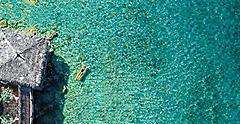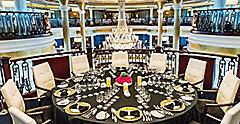Taking The Pirate's Path
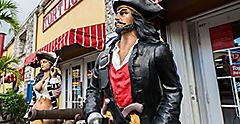
I looked out from my cabin's window and tried to take in the vastness of the ocean. We were on a cruise to the Caribbean, where I would be able to swim in clear waters, try delicious new foods and traverse historic streets. People have different reasons for going on a cruise, and mine was likely different from most: I wanted to follow the pirates. I wanted to swim where they swam, play where they played and drink what they drank.
I planned my trip with the help of the vacation planners on board then designed my own path to pirates. Some of the major pirating ports are in St. Thomas, Jamaica, Barbados and the Bahamas. Haiti, Cuba, St. Croix and Puerto Rico also all have a history of pirate activity nearby.
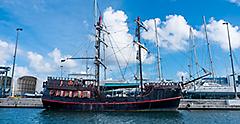
The Golden Years
My travels took me to many of the most well-known pirate hubs in the Caribbean, all of which preserve the history of the Golden Age of Piracy, which occurred between 1650 and 1720.
The colonization of the Caribbean led to a strong trade industry there starting in the 15th century. Spain had control of the Americas and the country's goal was to mine huge amounts of silver and gold. To protect their ships from attack, the Spanish government adopted a convoy system known as a flota, or treasure fleet, that protected the cargo-carrying ships. The ships were harder to attack because they were surrounded by other ships. However, any straggling boats of the flota were often in danger of being intercepted and looted.
English, French and Dutch colonists and traders ignored the treaties established with Spain and invaded its territories, which led to smuggling and privateering in the Caribbean. Many of the men and women working as pirates during the Golden Age of Piracy originally worked for the navy of their respective countries as privateers. "Privateer" was an official title that allowed sailors to sack the ships of the enemy with the permission of their government.
The shipments of Spain's precious metals were already a temptation to privateers working for their countries in the Caribbean and the Atlantic. Once privateering became less popular and the sailors were left without jobs, many turned to the lucrative career of piracy. They were already highly skilled sailors and ready for battle on the high seas. Not only were the fleets that traveled from the Americas back to Europe looted but the pirates attacked the Caribbean islands as well, sacking ships and ports close to the strongholds I would visit.
Buccaneering In Nassau
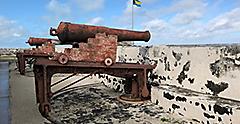
Historians say that pirate ships were like floating cities, much like the cruise ship I was traveling on. Many ports weren't designed for vessels of that magnitude, so they would anchor their ships farther out, then hop on smaller boats to row to shore. I felt lucky that my ship slid comfortably into port, with a ramp available for reaching land.
For my first pirate stop, I landed in Nassau. The capital of the Bahamas was a favorite of 17th- and 18th-century pirates because the coastal waters were shallow. Many larger ships ran aground and sank at its shores, but pirate boats with shorter drafts were able to make it to port. I headed straight to Fort Charlotte and the Pirates of Nassau Museum. The fort is a colonial citadel by the harbor named after King George III's wife, with underground tunnels and dark dungeons. The museum brings pirates to life with interactive exhibits as well as examples of their campsites and traditional pirate clothing. The tour guide took us to a replica sailing ship and talked about a popular punishment in the Golden Age known as being "marooned" in which someone would be abandoned on an island without any food, water or possessions.
I heard stories about Edward "Blackbeard" Teach, someone I would hear a lot about during my pirate trips. He was famous for intimidating his enemies with smoke that would billow from his long beard and hair. (He accomplished the theatrical effect by nestling slow-burning fuses in his hair). He also strapped pistols around his body to surprise his enemies in battle. Many pirates made it to Nassau besides Blackbeard, including Calico Jack, Mary Read, Charles Vane, Anne Bonny and others. I was thrilled to have stood on the shore where the pirates might have landed.
In A Pirate's Shoes
For my next stop at Bridgetown, Barbados, I wanted to get closer to buccaneering by sailing on an actual sloop and was able to board the Black Pearl Cruise, an experience which included walking the plank. Pirates were known to purposely leave some of their victims alive, leading to the stories about walking the plank. What better way to inspire fear than to leave terrified survivors?
I walked the plank nervously and then jumped timidly into the water. While others laughed and jumped without a care, I was trying to replicate the frightening experience of being thrown off a ship. (Call me dramatic.) Swimming in the water beside the ship, I had a better view of its wood panels as well as its red sail with a white cross, all of which evoked a different century. I snorkeled around the ship and then went back on board, this time laughing out loud as I swung from a rope into the water.
Jamaica Underwater Diving Ship Wreck
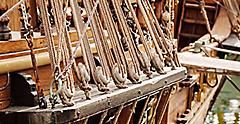

Many privateers became pirates because of their thirst for money, and they gained great amounts of wealth after the Spanish were defeated in the Caribbean.
I looked out to the water's edge and imagined the pirate ships coming in and out. The town is sleepy today, but the remains of a different era show how active this town used to be. There's still a strong seafaring tradition today.
An earthquake in 1692 sank two-thirds of the old city, and I took a tour of the underwater world, witnessing many archeological treasures such as a sunken ship and parts of the town. The ship is now the home of thousands of fish and other sea creatures. The city looks like a ghost town, filled with water instead of people.
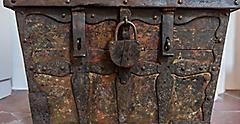
Finding Treasure
Perhaps the most iconic possession of a pirate is a treasure chest. The lure of buried treasure is yet another reason why many visit the islands. While it's not likely that you'll come across a chest full of emeralds while hanging out on the beach, some people have been lucky enough to find them. I was sure hoping to find one.
One treasure that has been confirmed as authentic is that of a Spanish galleon ship named San Jose, which sank near the Caribbean coast of Colombia in 1708. Its contents have been authenticated and are worth more than $17 billion dollars. The United Nations has recommended that the treasure not be removed and sold. I didn't find any treasure, at least not in the form of jewels and gold.
The decline of pirates in the Caribbean, which began in the 1720s, was due to the demise of mercenaries and the establishment of European armies. European navies fought against piracy as part of their plan for control of the Caribbean, as did the United States. European countries started to imprison pirates, while others were executed. Pirates began fleeing to other parts of the world.
'Avast, Me Hearties!'
Pirate slang is difficult to understand, but in St. Thomas, the captain of the pirate ship and skeleton crew I was visiting explained this classic phrase for me. It means "Stop and listen, my underlings!" His schooner was a beautiful vessel with bright red sails, and it's one of the "gaff-rigged schooners" that resembles the ones used by buccaneers from the past. This time, I didn't walk the plank, but the captain did. He jumped and then called us swashbucklers to join him on land. We all went ashore for food and drinks, and I remembered that in between all the stealing and fighting, pirates always found time for a drink and a song. I drank some rum, sang to my heart's content and finally felt like a real pirate.
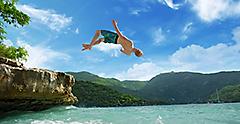
Get Royal Deals, Sign Up Today

Getting There
Explore Our Most Affordable Itineraries
Take a cruise adventure and experience the Pirate’s path.


